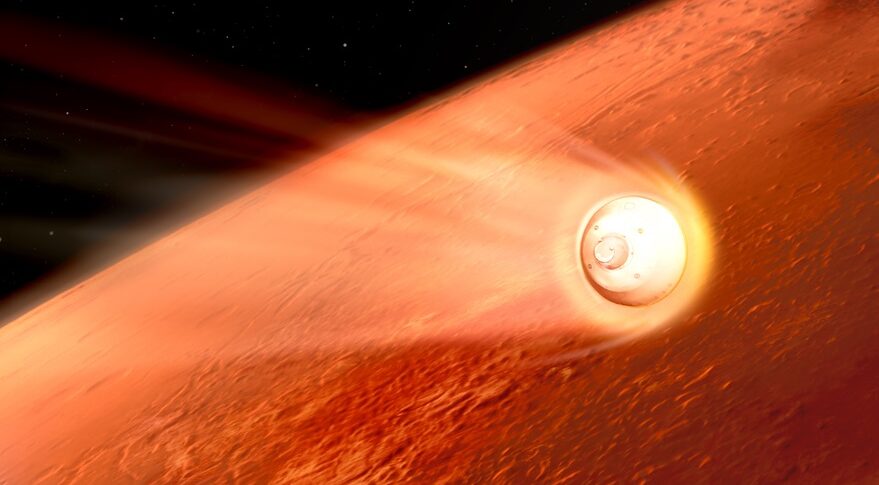In Today’s Deep Space Extra… NASA’s Perseverance mission on track for landing. Axiom Space raises funds to scale up production of private space stations and fly passengers to orbit.
Human Space Exploration
Trump’s 2024 Moon goal in jeopardy, acting NASA chief says
POLITICO (2/16): NASA is reviewing the previous administration’s plan to return astronauts to the Moon in 2024. Acting NASA administrator Steve Jurczyk stated the agency will decide in the next two to three months whether the current goal is feasible.
Private spaceflight specialist Axiom Space raises $130 million to become the latest space unicorn
Coalition Member in the News – Axiom Space
CNBC (2/16): Axiom Space’s ambitions of establishing a commercial low Earth orbit free-flying station were boosted on Wednesday with news the company has raised $130 million in private investment. “This is a major step for us,” said Mike Suffredini, Axiom Space president and CEO. The company, which plans to attach commercial modules to the International Space Station (ISS) beginning in 2024 and start the assembly of a freeflyer, also looks to become part of Spaceport Houston.
‘Parastronaut’ sought as ESA recruits its first new astronauts in more than a decade
SpaceNews.com (2/16): The European Space Agency (ESA) opened a call for astronaut candidates, its first in a decade. The plan is to recruit up to six career astronauts and 20 reserves. The selection process will also identify a “parastronaut”, someone deemed psychologically, cognitively, technically, and professionally qualified but with a physical impairment that would normally prevent them from being chosen because of current hardware limitations. ESA said it will work with crew vehicle providers and international partners “to identify potential adaptations to eventually enable an astronaut with disability to fly to space.”
Russia eyes launching four Angara carrier rockets for human Moon landing
TASS of Russia (2/16): Russia’s Energia Space Rocket Corp. has come up with a strategy for launching cosmonauts to the Moon by 2030. It relies on four launches of the Angara rocket for the assembly of crew and lunar lander elements in Earth orbit and to provide liquid hydrogen and oxygen propellants. (Editor’s note: TASS is a Russian government-owned news source).
Space Science
Mars 2020 on track for landing
SpaceNews.com (2/16): NASA’s Jet Propulsion Laboratory (JPL) is quite pleased with the performance of the Perseverance rover as it closes in on the Red Planet for a touchdown tomorrow. Commands from Earth leading to the landing were transmitted on to the spacecraft on February 12.
Here’s how to watch NASA’s Perseverance rover land on Mars on Thursday
Space.com (2/16): The Perseverance rover is due to land at Mars’ Jezero Crater on Thursday around 3:55 p.m. EST. There are a number of NASA-hosted activities leading up to the landing as well as the drama of the touchdown itself and the aftermath. NASA TV and the NASA Jet Propulsion Laboratory (JPL) YouTube will host links to the activities. Presentations will be available in Spanish as well as English.
Opinion
Sen. Marco Rubio: NASA’s success is critical to our nation’s future
Florida Today (2/16): In an op-ed, U.S. Sen. Marco Rubio (R-FL), a member of the Senate Appropriations Committee, pledged efforts to gather bipartisan support for NASA’s challenging agenda, including the Artemis initiative to return humans to the Moon. “As we celebrate the touch-down of Perseverance and prepare for Artemis’ launch, Republicans and Democrats must come together to authorize the resources needed to explore that next frontier, so we can continue creating good jobs, beating China in the new space race, and inspiring Americans for generations to come,” writes Rubio.
Other News
Progress freighter docks with Space Station to help discard Russian module
Spaceflightnow.com (2/17): Russia’s MS-16 Progress resupply mission capsule, launched late Sunday from Kazakhstan, reached the International Space Station (ISS) early Wednesday for what was to be an automated docking. A difficulty during the final phase of the approach, however, prompted cosmonaut Sergey Ryzhikov to issue manual commands to accomplish the docking. As it departs later this year, the MS-16 will take with it and dispose of the ISS’s aging Pirs docking module to make way for Nauka, a new multipurpose laboratory module.

